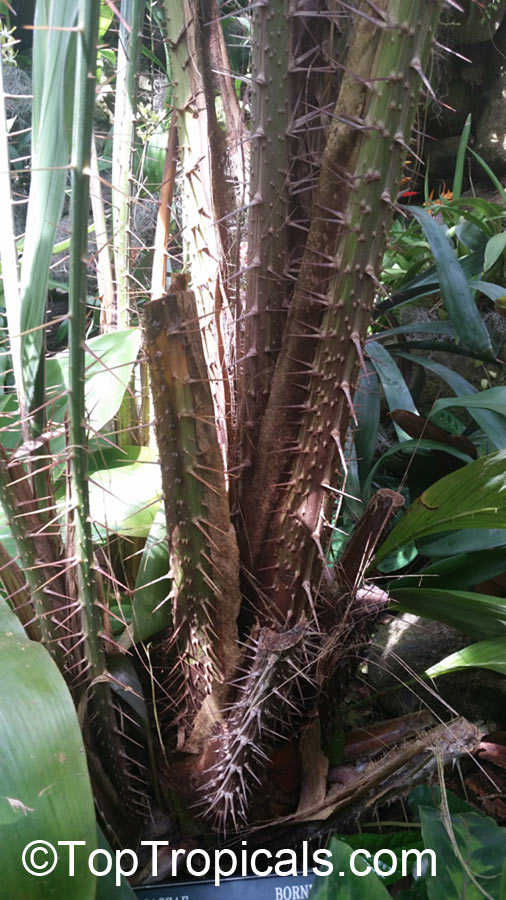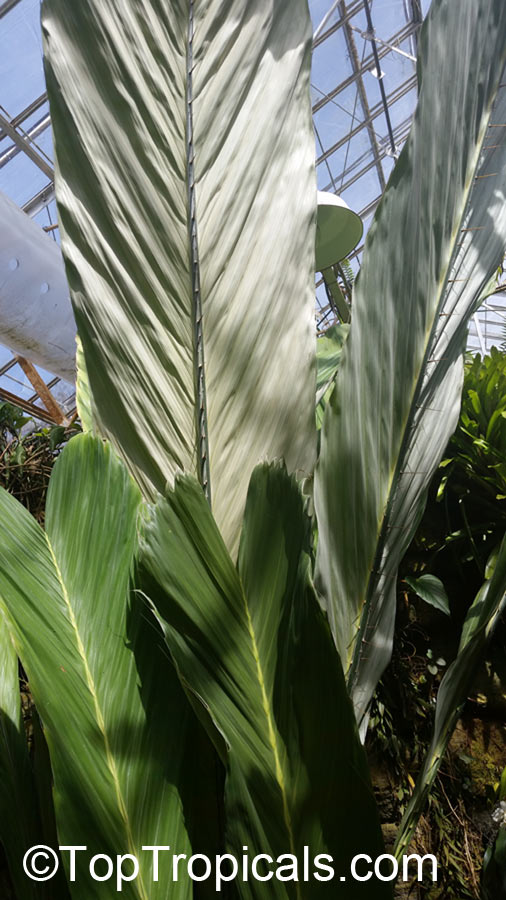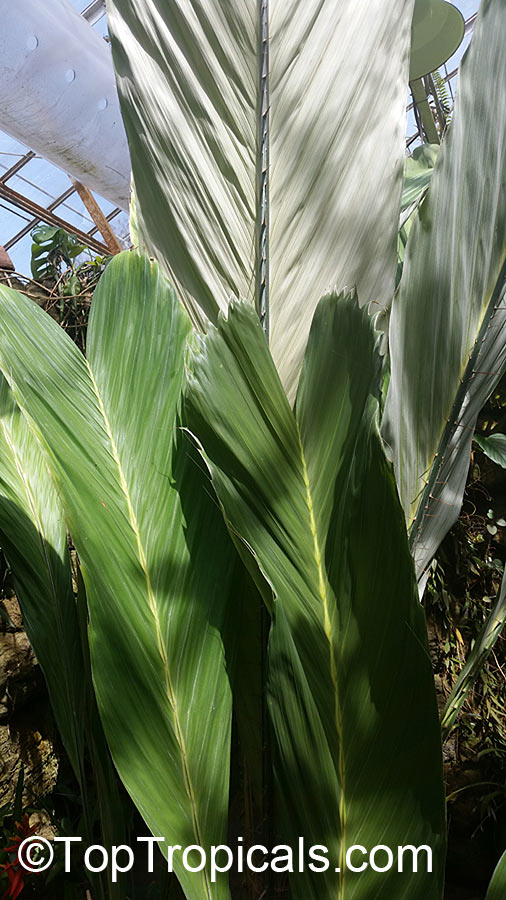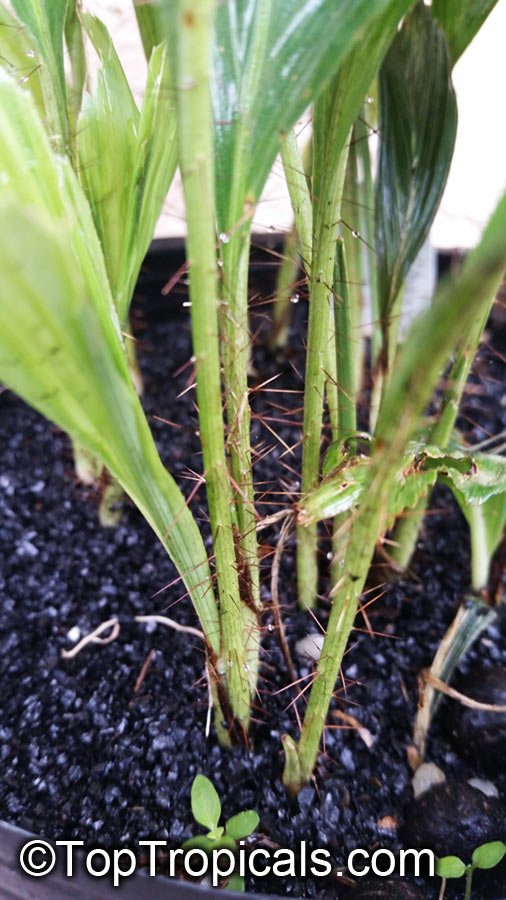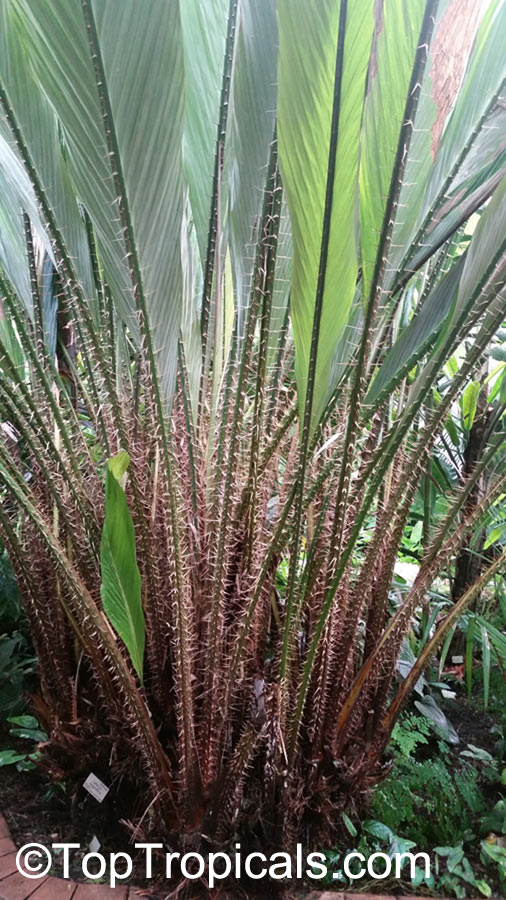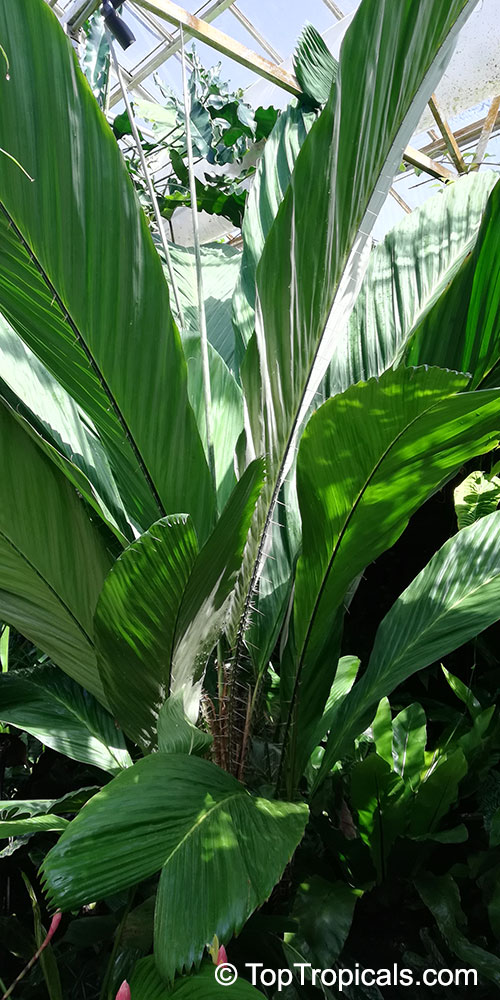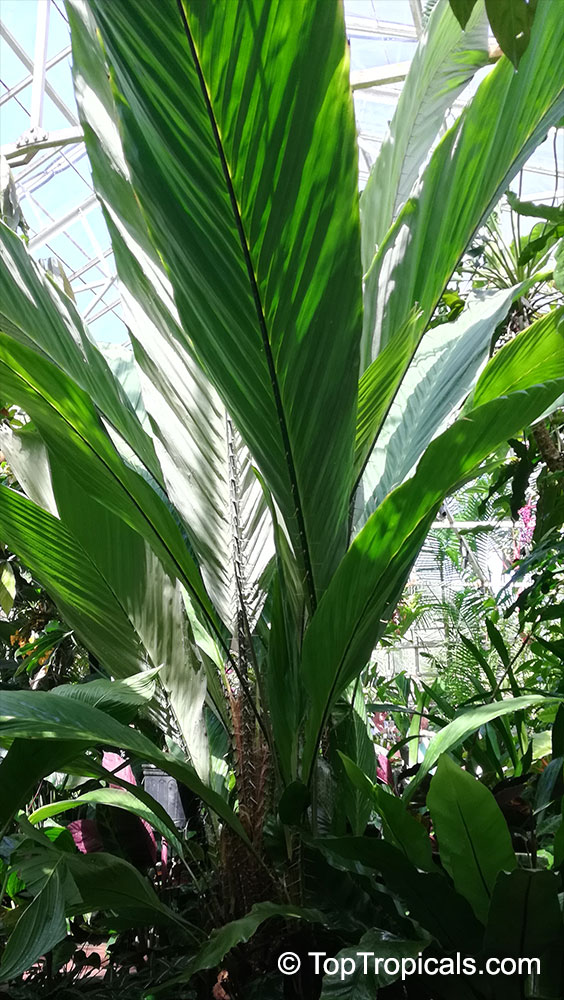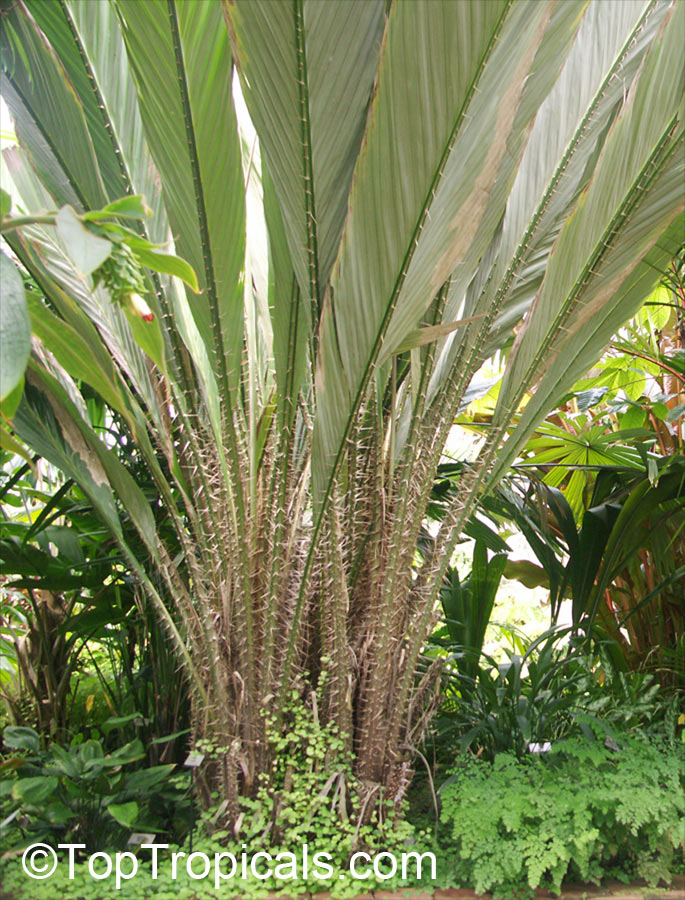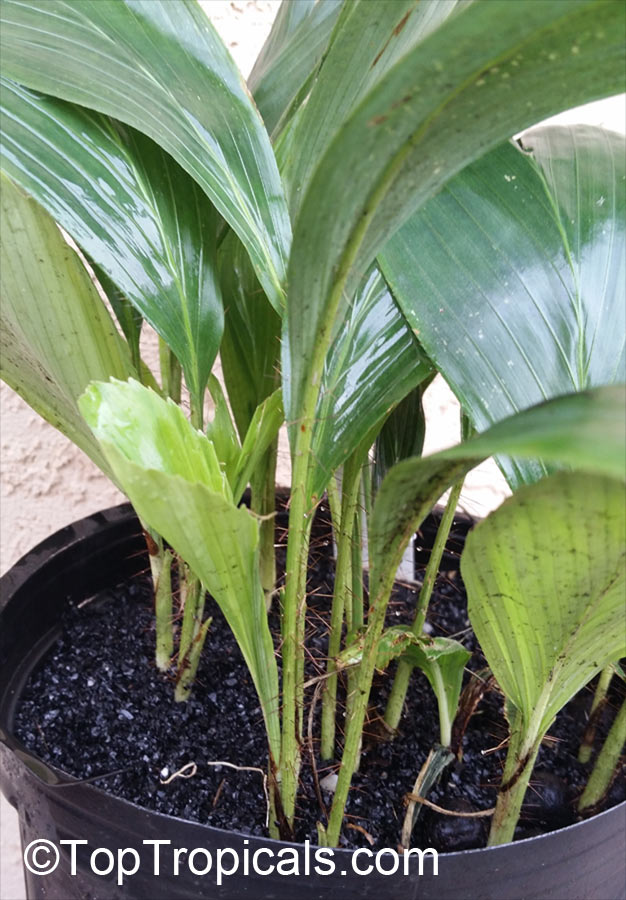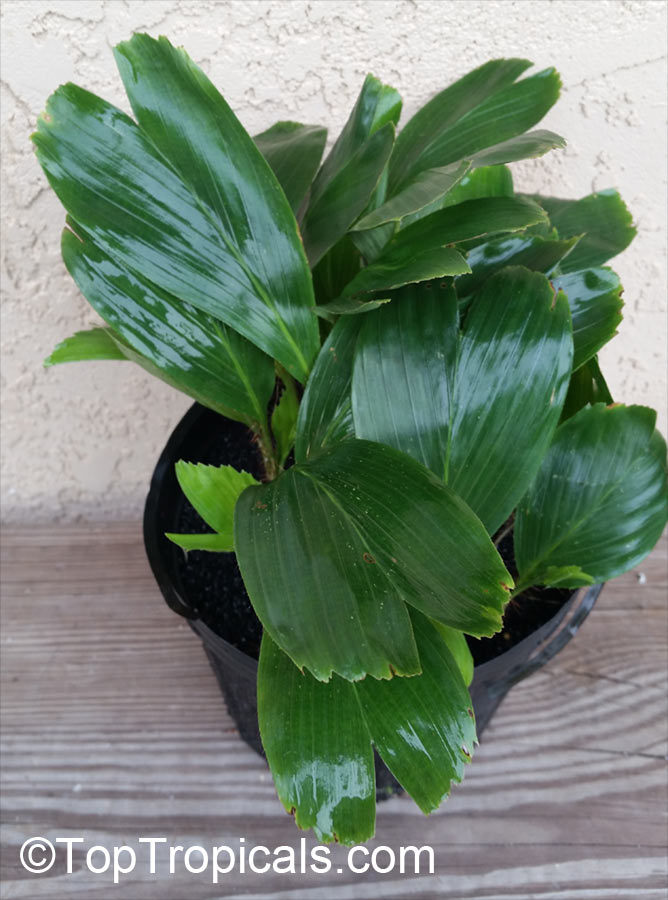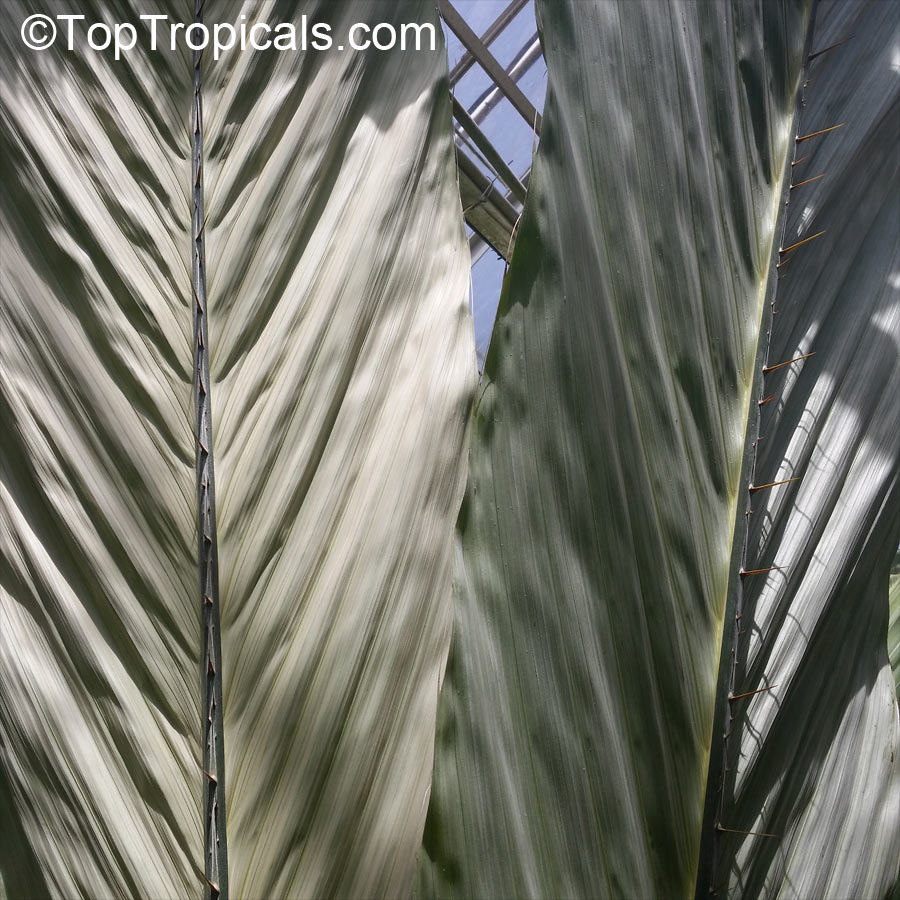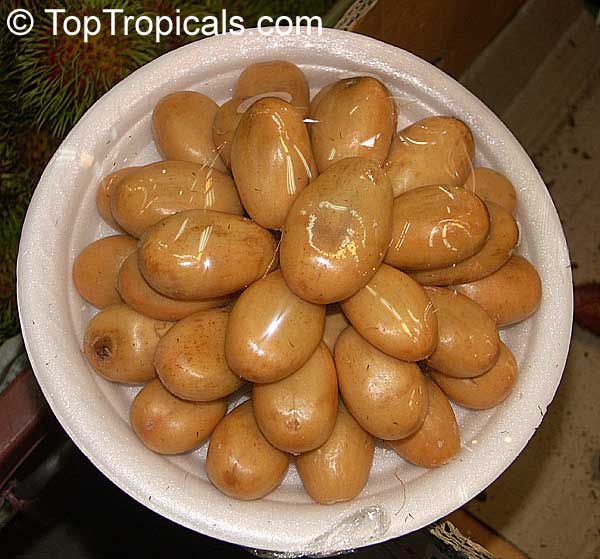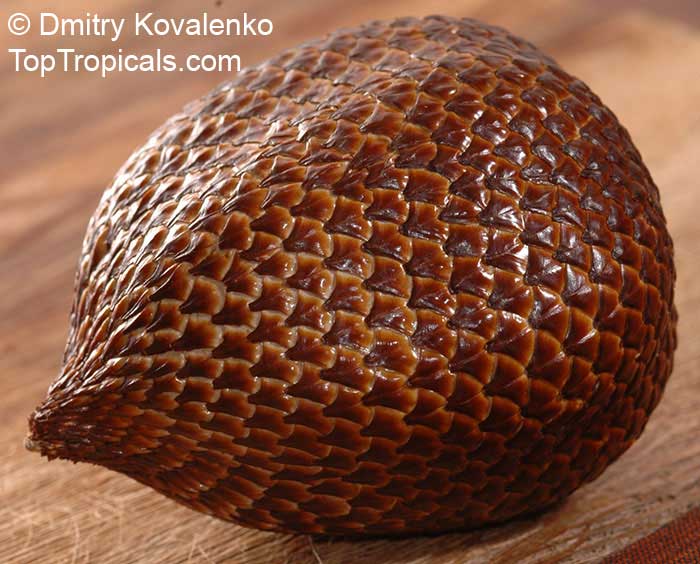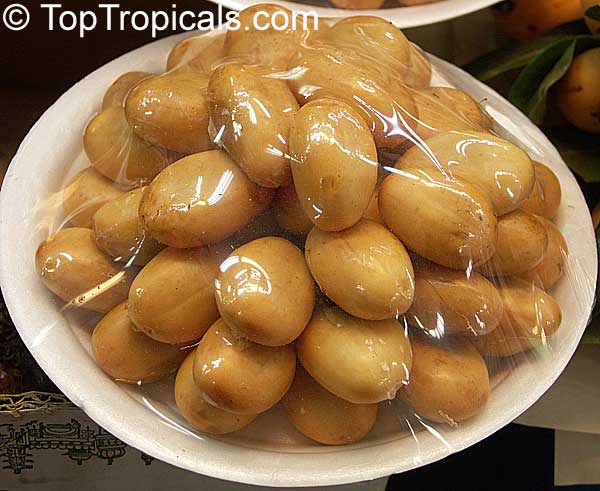Salacca magnifica, Salacca zalacca
Salacca, Sala, Snake Fruit, Minor SalakFamily: Arecaceae / Palmae
Origin: Borneo










Salacca magnifica (Salacca, Snake Fruit) is a fruit-bearing palm that is native to Borneo. The plant thrives in full sun to semi-shade. It is very tropical and can tolerate temperatures as low as 50°F, making it ideal plant for USDA Zone 10-11.. It requires consistent watering to keep the soil moist. In colder regions, it can be grown in a pot, but this requires careful monitoring of the temperature and frequent watering and shading.
The fruit produced by Salacca magnifica is unique and interesting, with each fruit containing up to five seeds. When ripe, the fruit has a yellow, smooth outer skin and a subtle, sweet, and slightly acidic flavor in both the skin and flesh. The kernel has a mild flavor with a slight taste of coconut and can be eaten raw or cooked. Salacca fruits are rich in Vitamin C and other nutrients, and are believed to have detoxifying properties, aid digestion, and help regulate cholesterol levels. These fruits are used in various culinary preparations, especially in Southeast Asian countries.
In Indonesia, the fruit is also candied ("manisan salak"), pickled ("asinan salak"), and used in "rujak," a spicy salad of unripe fruit. Mature fruits can be canned, and the seed kernels of the young fruits of the Javanese "pondoh" form are also edible. A closely-planted row of Salak palms can form an impregnable hedge, and the spiny leaves can be cut to construct fences while the leaflets are used for thatching. The bark of the petioles can be used for matting as well.
Similar plants:
